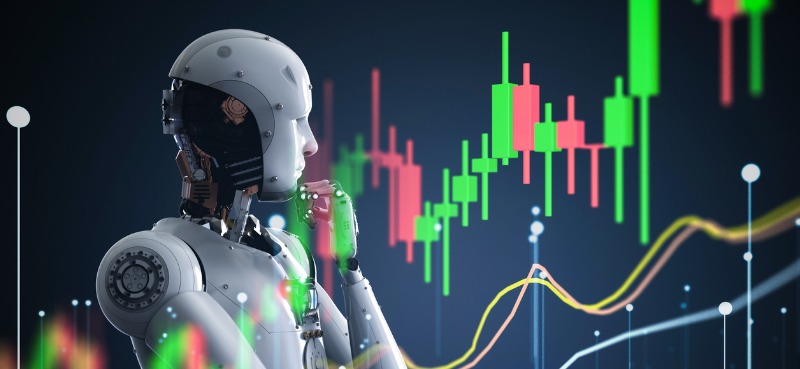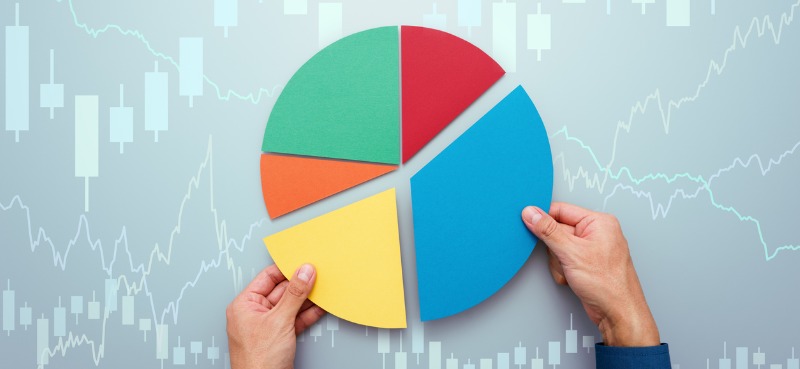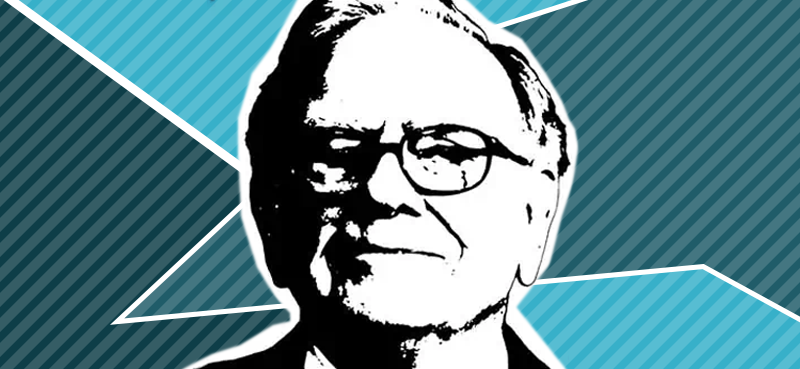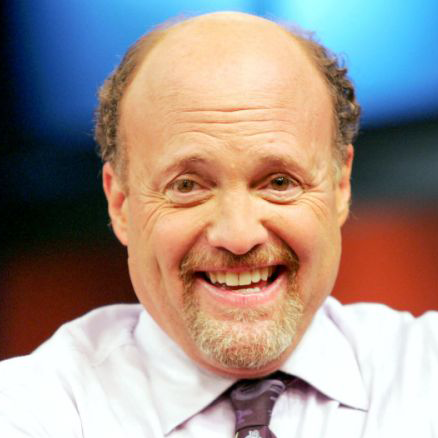- DigiPower X (DGXX) is a hidden gem in today’s market [0:20]
- Introducing Michel Amar, CEO of DigiPower X [3:17]
- DGXX’s pivot from Bitcoin mining to AI is a game-changer [6:59]
- DigiPower has a massive head start on its competitors [14:17]
- Why this debt-free revenue machine is so undervalued [16:33]
- How management takes care of its shareholders [24:40]
- One of the world’s best investors is backing this company [28:30]
- How this $30M company plans to unlock $500M in value in 2 years [32:28]
Wall Street Unplugged | 1235
Peter Lynch is backing this undervalued AI disruptor
Transcript was automatically generated.
0:00:02 – Announcer
Wall Street Unplugged looks beyond the regular headlines heard on mainstream financial media to bring you unscripted interviews and breaking commentary direct from Wall Street right to you on Mainstream.
0:00:20 – Frank Curzio
Hey guys, I have a fascinating interview for you today. It’s with Michel Amar, someone I met personally went to his house to meet him because I was so fascinated by his company. We do research on this name for about three months and that name the name of the stock is DigiPower X. It’s a Bitcoin miner. It’s a company Michel started in 2014, again, innovative guy in technology, if you think back to 2014, that’s when Bitcoin was around $1,000. You guys know where it is today. He’s transitioning this business into something much bigger and it’s fascinating to me Because sometimes you’re able to find hidden gems, especially when you have turmoil in the markets and small caps are getting crushed.
And this is a name that I’m an investor in. I’m an investor in a higher price, but I want to do an interview with Michelle and let him tell his story about this company, because I think it has massive, massive upside potential, and I’m just going to give you a little bit of scoop before I get to the interview. Okay, so if you’re looking at this company, DigiPower X it’s trading at a dollar. Okay, this is a company that has a $33 million market cap, which is crazy, considering they’re doing $40 million in revenue. They have no debt. They have over $10 million in cash and Bitcoin on its balance sheet and this company is growing significantly.
Now what I want you to pay attention during this interview is the assets. This is a company that’s not just a Bitcoin miner. They actually own the power plants and now they’re switching which is called Tier 1, which is Bitcoin mining, to Tier 3, which is fascinating because that’s AI, that’s the power generation. That’s what the largest hyperscalers are paying hundreds of billions of dollars for spending a ton of this money. You have Amazon spending $100 billion on this alone just one company. So with 300, 350 billion they’re going to spend this year. Just the top four or five hyperscalers to get into this industry. They’re dying for power. They’re trying to get it from so many different sources. Here’s a company that actually owns their power plants. The assets of this company on the balance sheet are worth three times where it’s trading at Now they’re transitioning from tier one to tier three and he’s going to go over this.
He’s going to explain why they’re megawatts. I want to get too technical 200 megawatts that they own. These technically go for 500,000 a megawatt. When it’s Bitcoin mining, they go 15 times that when they transition into tier three. A lot of the Bitcoin miners say they’re doing this, but they’re not really capable of doing this. Here, someone’s going to tell you why they’re doing it. They’ve been doing it for six months. A transition that’s coming. He’s going to break down the assets and something fascinating towards the end of the video please listen towards the end because he’s going to tell you one of the greatest investors of all time is an investor in this company, someone that I never thought would invest in a company like this, and the name of that person is Peter Lynch. Peter Lynch, the greatest value investor of all time better returns than Warren Buffett is an investor in this company. Just came in the latest financing round.
So, without further ado, let’s get to my interview. Here is Michel Amar Michel, thanks so much for joining us today. How are you doing? Beautiful? How are you? It’s great.
We met several times right and I was blown away because when I look at different companies, I get pitched a lot of companies and someone talked about a good friend of mine and yours said, hey, you should look at this company. They’ve got a great management team. They’re in a space which is crypto right now, but they transitioned and no one really knows about it and I’m just like, okay, yeah, let me take a look at it. I have to say I get that conversation a lot and when I actually started looking, digging into it, talking to you, I wanted to meet you in person and I was just blown away. Do DigiPower? Let’s start there. Let’s start with your company. And what was your motivation to start it? Because right now I think things, things are fascinating. You’re in this growth trajectory that that no one’s really talking about and I think people could really really do well with your stock here. But talk about the beginning. What made you start this company?
0:04:12 – Michel Amar
so basically, uh, 2014-15, when my son graduated from usc, there was a lot of buzz about Bitcoin, crypto, and my son approached me and convinced me to start investing in these miners out of China and we actually built our first farm in LA Very high cost of electricity and we bought this first S5 at the time and this Dash Miners and we started to set up a couple hundred of them and that was fascinating because it was basically getting a printing crypto machine. And then, quickly, we realized that the cost of electricity was a very important factor and we started to look into not only green energy but low-cost electricity in the US and we came with the hydropower in Niagara Falls, upstate New York, and that’s where we started to open our second farm, bought this more sophisticated miners at the time called S9.
0:06:23 – Frank Curzio
And we started to develop farm after farm and grow the business until 2020, a few weeks before.
0:06:28 – Michel Amar
COVID, where we got public and started the venture of expanding rapidly the crypto mining. So when you first started?
0:06:32 – Frank Curzio
where was Bitcoin? I mean Bitcoin 2000,. You said 14, 15? Yeah, it was very low price. I think it was $1,000. So you’re able to foresee this in 2014, 15.
I just looking at your background, your profile you love innovation, you love getting into things very early, and what I was fascinated about, which got me on board here, is you told me something when I met with you personally that, hey, this Bitcoin mining is more of a stepping stone because it has a huge future and a transition into another business which everyone’s talking about today is AI and the power generation that they need.
But you’re transitioning into something that’s fascinating because what you do is you went out there and you actually own a lot of this power. Talk about some of the assets you own, because that’s relevant into the next step in the AI, which is fascinating for me which you just basically started seems like around six months ago, probably transitioning into that, going from tier one to tier three. But let’s get to the assets here, because once we get to the assets and the transition, that’s when everything comes together. Where I’m fascinated with this is a stock that I think go tremendously from here and a company that just has a long, long runway of growth. Talk about those assets that you actually acquired and that you have right now for your company?
0:07:42 – Michel Amar
Well it, we invested every penny into assets. We even acquired a power plant combined cycle. That makes us a little bit different than our competition, because we are in the energy business. Actually, if you dissect our PR for February, out of 4.7 million revenues for February, 45% was unrelated to Bitcoin and it was purely selling energy to the grid at a very good margin. I think we made about 700K just on selling energy just in February.
So Bitcoin was an incredible asset and a great business. It’s a stepping stone to build up infrastructure, and now we have a very solid infrastructure that can be used for energy, that can be used for AI and HPC, and we are leveraging this infrastructure to transition now to data centers. And what makes us different from the other guys is that we are developing a power infrastructure, and Bitcoin mining is one of the applications of our power infrastructure, and we are developing now AI and HPC infrastructure, which has a much bigger multiple than Bitcoin mining, is more predictable and has an incredible future. As you know, there are trillions of dollars that are going to be invested in AI and I think we are at the beginning. So we’re well positioned to leverage and utilize our assets.
0:09:54 – Frank Curzio
So when you look at other Bitcoin miners, I think people can identify and say, okay, we know Mara, we know Core Scientific, we know BitDigital a lot of these companies who again do the Bitcoin mining operations. But when I look at what you guys did and how you’re transitioning and I hear them saying that they’re going to transition, but you’ve been, you’ve been talking about this for six months and now you actually transition, so you actually own your power, right? So you have a plant in Alabama, a plant in Tonawanda, New York, another plant in Buffalo, New York, and then you have North Carolina. What assets coming on?
Now stay with me here everyone, because I got to get into a little bit of math for you to understand this where megawatt is the power.
But you’re looking at pretty much over 100 megawatts of power and then you have capacity of 200 megawatts of power.
Could you talk about megawatts of power? Because this is an industry standard kind of guys like same stores is for retailers, right? So when you look at the megawatts and power, you would say, okay, a megawatt of power may be worth about five hundred thousand dollars and you can correct me if I’m wrong on that if it’s on a bitcoin mining right, and that’s tier one. But when you go to tier three and you’re able to transition this stuff, when now you’re selling it to some of these people within ai, where it’s power generation, and that’s what you’re talking about the transition to power where it’s not generation, and that’s what you’re talking about. The transition to power where it’s not just, you know, the Bitcoin mining how much is each megawatt worth? Because I think it’s worth 500,000 when it’s just Bitcoin mining again, depending on some of the dynamics there. But when you switch it over to tier three, which a lot of companies aren’t able to do, talk about the valuation of your company and what’s going to happen.
0:11:26 – Michel Amar
So so it’s a good question. Evaluation on the tier three is about $15 million megawatt. Say that again $15 million per megawatt.
0:11:32 – Frank Curzio
And how much is it if it’s tier one, which is data mining?
0:11:40 – Michel Amar
500K, but the capex is also different. In tier three you have a higher level of redundancy, you have a higher level of security, so there’s more CapEx involved, but the multiple is 30x. It’s 30 times more valuable and there’s extra value because it’s predictable. You sign a five or 10 year contract with a customer. There is no volatility, so it’s very valuable.
As far as what makes us unique in our infrastructure, we not only have megawatt power available for our substation and the grids. We also generate power through our power plant. There are few crypto miners have power plants where they generate power. We generate power that we allocate to the communities, to the grids, we allocate to our mining operation and we allocate to our data centers. Now and that makes us pretty, you know, different and unique in our space we have licenses to sell power, which most of them do not have.
It took us like three years to get these licenses from FERC, federal Energy Commission, and from the PSC and now we can go and expand and acquire all the power plants in the US which is a very specific niche and develop data centers and we are basically vertical and, for instance, for tier three, which you need redundancy to generate power and be able to pull power from the grid. You already have two sources of energy you generate, you pull from the grid. So already you’re redundant and already you’re qualified to be on a tier three base data center. So that gives us a lot of edge and speed to market as well. Most of the big companies are building data centers within three to five years. We’ll do it within 18 months. So that put us in a very unique situation with a high demand with high multiple.
0:14:18 – Frank Curzio
So you guys have the capacity, you guys have the electricity right, so it separates you from your competitors. Say a guy like me okay, data centers, ai, they all need power. Okay, I’m going to go and buy a power plant because I’m going to raise a lot of money and $100 million, $200, $500 million and I’m going to buy power plants and I’m going to start Talk about that process because there’s massive the barriers of entry into this, especially where you are. That just in government and policies and FERC and all the things talk about that process. You talked about it a little bit and touched up on it, but this isn’t something that anyone could just do. It’s something that where you guys have a huge head start because you own this electricity. How difficult it is for a guy maybe have a little experience in this industry say, hey, I want to just buy power plants and I want to compete with everybody. How difficult is that process? Is it almost impossible?
0:15:07 – Michel Amar
So for a newcomer with plenty of capital to buy a power plant, you have to go through a process with utilities, with federal agencies, with state agencies, but move very, very slow and the process is anywhere from 24 to 36 months two to three years just to get the approval to get started. You have to do a lot of studies, you have to get the approval. It’s a very long process. So two, three years, you do nothing but legal work, nothing but legal work. Then, in two to three years from now, when you’re authorized to operate, then you have to build the site. That takes another two, three years. So it’s a very lengthy process, highly regulated. Because energy is highly regulated and because we started in 2014-15, we have a big head start. We started the process a long time ago. So therefore, we have assets that are valuable for this transition and us and every miner who have assets have a value. We just added the fact that we are generating power, but give us a different edge.
0:16:34 – Frank Curzio
I’m bringing this up because I’m looking at and you see me looking at the screen here is that you just this is March 31st. We’re talking about, just a week ago, your point of your yearly financials and also your quality financials. And when I look at yearly financials, it’s saying that you know financials at 42% revenue growth year over year, 220% EBITDA turnaround and some of these things that I look at where revenue grew 42% year over year at $37 million. So your revenue is growing $37 million and you know, yes, it’s high cost of capital, but you talk about your EBITDA improved to over 8 million, 8.8 million in 2024.
Why do you think your market cap is sitting at a $30 million market cap when you have no debt? You have $10 million, over 10 million in, you know again, in cash that you raise, and also when you have on the balance sheet in terms of the Bitcoin that you own that you accumulated over the past few years with this revenue, this growth model and just the assets that you own are probably worth 3x of what the stock is. What do you think is the disconnect between the stock and what this should be valued? Because when I look at it, it’s just insane.
0:17:40 – Michel Amar
So there are a few factors. One we decided through the years to build the infrastructure with solid assets versus market it with advertisement and, you know, empty promises. The second we just dropped, in the last six, seven weeks, 70% in market value, along with many companies. The third reason we are not affiliated with any indexes. We need to be at the $300 million market cap, basically to create more volume, more liquidity and get to the indexes. That takes you to a different level.
We believe that our fundamentals are great, unique, because we have no debts. We can weather any storms. We’re not worried where other microlisted companies have a very high level of debt may not make it, so we are in a very good situation in that respect. We feel that we dropped dramatically and it’s not representing our value. Because we have great value, we are trending up. First quarter demonstrates that we are on a trend of $50 million without adding any additional business, which we plan to do, which we plan to add and grow our business this year. So we should have an incredible year and I believe that the investors, the long-term investors, will get their return based on fundamentals with us and when we start our conversion to HPC and AI data centers, our multiple should grow dramatically. So this is our game plan.
0:19:50 – Frank Curzio
So how difficult is it? Because you explained this to me and it was very I had to listen to you and then ask you even more questions and follow-up questions. How difficult is it for just a traditional Bitcoin miner to go into tier three, not just for the electricity, but you were talking about the relationship with suppliers, where you need those relationships to actually build this certain infrastructure from tier one to tier three? Could you, could you outline that? Because that’s another high barrier to entry that I saw. Okay, there’s not every company could just turn around and do this. You just said it takes. It would take four or five years to really, you know, get a new plant up and running where you have access and you could do this because you own it, where you know it’s a transition. But talk about the transition with the suppliers or relationships and how important that is as well but so.
0:20:33 – Michel Amar
So through the years, we accumulated a lot of different equipment. I’ll give you one simple equipment like transformers, uh, transformers. Today, supply-wise, it’s anywhere from six months to a year to get a transformer, and we own many transformers. You have switchgears unnecessary. You have generators, backup generators, upss. So all this equipment that we accumulated for the sake of Bitcoin mining we can use and leverage for data centers, and that gives us again a head start. We don’t have to wait six months to a year. We don’t have to finance it because we own it. So the combination of owning the power sets, owning the power equipment, gives us the ability to move faster and in the next three to five years it’s kind of a race to who is capable of executing, and we are better positioned than newcomers for sure, most of people because of our assets.
0:21:54 – Frank Curzio
Yeah, it’s incredible how much of a head start you have on everyone, which is fascinating to me, even the Bitcoin miners, as well as new people coming in. I don’t know if you could talk about this, but do you have high level? Because we hear data centers, we hear Microsoft, we hear Facebook, which is better. We hear Oracle right, we hear these Amazons. These are the guys Google’s, the ones that are spending over $300 billion in CapEx. A lot of this is going into power and AI and stuff like that, and this is just over the next year, right, just a couple of them, which is enormous, and none of them have said that they’re cutting, even though we have difficult market conditions. None of them have announced and said we’re cutting because they need more power, which is AI, keeping this revolution just keep continuing, and we need the speed and power.
Do you have any of these? Do you have big clients? Do you have these guys knocking on the door and I don’t know how much you could say about that, but can you say, hey, we have tier one customers or big customers? I don’t know if you can name them or not, but are you seeing those people knocking on the door? Because they’re looking at your company going wow, these guys are just sitting here with power, we can get operation, we can get this thing right up right away. I mean, after all, you know as well as I do, they’re booking power to basically restart this part of the plant for five years and then lock in electricity for 20 years after that, which I don’t think that you’re going to get this operational in five years, when you go to permitting local, state and federal, they’re locking stuff out 20, 30 years. You’re sitting here right now ready to go with pretty significant power that I would think a lot of these guys may be knocking on the door.
0:23:21 – Michel Amar
So we actually have developed a relationship with one co-JV partner. That’s a $100 billion plus AAA company that we’ve been doing mining and we’re entertaining doing, of course, ai with the same partner. We’re entertaining doing, of course, ai with the same partner, which we can grow dramatically with for the next five years. So we do have the relationship and the history partnership with I can’t disclose the name because we’re on the NDA, but we are currently working with this partner for the last two years.
0:24:11 – Frank Curzio
Which is great. I mean having a partner that you’re working with, that sees what you’re capable of, and working with you for two years and now it’s going to sign on to more of this, especially with the transition. That’s really incredible. You’re not just getting a new guy that’s trying you out. I mean, this is a person that I have your relationship with. Sounds like that’s correct. No, that’s great. So I I want to transition a little bit here, because what blew me away when I mentioned I mean a lot of ceos, of small companies, and everyone has great story and they all talk about. You know where that company’s going to go and their projections. You know that’s supposed to do right.
Uh, with ceos when to you which I love is when you compared yourself to other companies within mining you were saying how so many of these companies dilute themselves and you never want to do that. You run a debt-free company right now, not that leverage is the worst, but some of these companies are leveraged so much and we know interest rates are high. Refinancing debt is incredible, but you were so concerned about your shareholders and not diluting them and making sure that you’re doing the right thing for them. Talk about that process, because I don’t see the same thing from the other competitors. Even with MicroStrategy dilution that’s taking place.
I love what he’s doing. He’s been proven right. Even with the stock down off of its highs. He’s, since 2020, buying Bitcoin through the convertible strategy now. But you know, when I see what you’re doing in terms of, like, care about your share, talk about that and how meaningful that is to you, because I don’t really get that from a lot of CEOs where they’re looking at you know the stock’s going to go hard. You’re going to make a lot of money. You were concerned with, like almost the infrastructure of your own company, like the way it’s formatted, saying, hey, we have shareholders here we want to take care of and do the right thing about. Talk about that and how important that is to you.
0:25:45 – Michel Amar
So originally, when we initially started the company, it was private and I invested early on about $8 million of my own money and never sold one stock, Kept on buying stocks, actually even bought stock last year, more stock last year and I protect, of course, the investors because I protect myself and I’m a major shareholder with my son, Alec, and I really I’m against dilution. You know, of course, to grow you need to raise capital for growth purpose, but I’m very interested and concerned about the fundamentals of the company, which makes us different than your usual CEO who’s got hired, who has no skin in the game and doesn’t really care about diluting as long as they get their compensation and their bonuses and so on. That’s what matters. You know, my strategy is very long term. We want to build a business.
We have an opportunity with the AI to build a very valuable business in the sense that as we get started, we copy and paste and get more data centers, bigger data centers. We will have access to debt financing because you have predictable income. So it’s a much different opposite business than the Bitcoin mining where it’s so volatile that you’re scared of debt financing because you cannot rely on future income. So, based on this transitional business. We’re going to be able to grow safer and faster and there’s no really limit on the valuation of a company that has built data centers. It’s very valuable now.
0:28:06 – Frank Curzio
So you look young, but you’ve been around the industry. You’re talking about the 90s, you’ve been around this and now you’re talking about how important it is to make sure the structure, the fundamentals, are good, because of how volatile this industry is, which we all know. Within crypto, we’ve seen a lot of big guys go out because they leverage too much. You have a personal friend that I’ve heard about from someone else from another source and I don’t know if you get the value from that part, but we’re running a company that way, but he happens to be Peter Lynch and people know Peter Lynch and it is that Peter Lynch.
Guys, fidelity, one of the greatest investors of all time. Talk about that, if you can. About your relationship I don’t know if you do or not, but I heard that, hey, I don’t know if he’s an investor in a company coming into the company, but I know you have that relationship with him where I heard it’s much closer than just like, hey, how you doing. I wonder if the value part of it. If you’re looking at, hey, our fundamentals, they always need to be very, very strong. This way, we continue to grow well into the future.
0:28:59 – Michel Amar
So so Peter Lynch I’ve been in touch with him very frequently four or five times a year for sure and he’s one of the major investors of our company and he’s been investing for the last four years, or five years, and his piece of advice always been do not worry about how fast you go, just have a long-term vision, have good fundamentals and it will pay off. And he’s been a very big supporter of our company. He believes that we are very valuable and if we are capable of transitioning in this AI HPC business model, we should really create a lot of value for the company of investors. So he’s been very supportive to us.
0:30:07 – Frank Curzio
Wow. So Peter Lynch is he? He? I mean I don’t know how much he owns of the stock, I don’t know if you know again, I can find that out and stuff but I didn’t even know he was an owner, a significant owner. But so you’re talking about one of the greatest value investors investing in.
You know crypto, but not just crypto, because, as of last quarter, you didn’t. What I love is you said this six months ago we’re’re transitioning into tier three. I hear everybody saying that. It’s almost like when you hear a company saying, hey, we’re going into AI. Every company has AI, but they really don’t have AI, right. But now you look at your last quarter, which was reported to an incentive view. This is a little over a week ago. You’re showing that the revenue that came in from the quarter 75% from mining, 25% from energy sales so you’re looking at this transition. It’s happening. You’re not just saying it now you’re seeing the results. I mean that has to have you get excited. Has that peter lynch very excited? But you know for him to be a significant, how significant of investor is, could you say that? Or?
0:31:00 – Michel Amar
I can’t really say, but he’s a pretty significant investors here wow, he’s there and uh supportive and he believes in the company.
0:31:09 – Frank Curzio
Last question here when do you see your company in, say 12 months, in terms of the transition of what you’re doing, because you have lots of plans out there. Your first page of your presentation shows that timeline of exactly what you’re doing. You’re very plan-oriented. This is what we’re going to do. You’re very open and transparent about it with your shareholders on your presentation. It’s one of the first pages of your presentation. This is the transition. Where do you see yourself say six months, 12 months?
0:31:37 – Michel Amar
and maybe either further two years from now.
So it’s a working process and now we are finalizing the stage of all the permitting, all the designs, all the designs.
We hired one of the most qualified architects in the US, used to be a division of HP, Hewlett Packard, very qualified architect, and we designed our data center Beautiful, which I may share the deck with you, frank and we’re going to start to do in different phases, different holes, and we’re going to go like eight megawatts at the time, eight, eight, eight, eight and go in phases.
So in the next eight, eight, eight, eight and go in phases. So in the next two years, our goal is to go from, you know, anywhere, up to 55 megawatt worth of data centers, which is huge for data center tier three, and from there upon execution, we’re going to try to leverage and optimize our power sets to grow to a different level and go to the upper scale data centers, which are usually 200 megawatts and up. First we need to execute the first initial tier three, get it running, and then we will expand and then we have a path. This is, you know, when you become a pro in tier three data centers. It’s a very limited supply. So we really expect to be very busy in this expansion.
0:33:32 – Frank Curzio
So did I hear that right? You’re saying like, within say, two years, like you’re doing eight megawatts at a time, right? Is that what you said, correct? And then what? Up to 50,. You said 55. 55 megawatts Over what? Over a two-year period, over two years, correct? And you’re saying so, 55 megawatts? And what did you say that they were?
0:33:50 – Michel Amar
valued at before About 15 million dollar megawatts. All right.
0:33:53 – Frank Curzio
So even if we take 10 million, it’s 550 million, 550 million and your market cap is sitting at 30 million, with no debt, with a strong balance sheet. Just to put that in perspective, because this is a fascinating company I feel like nobody knows about. I think that’s going to change very soon, as soon as the word gets out of what you guys are doing, especially the fact that you’re not just saying what a lot of people say Well, we’re going to get into AI, we’re going to get into power. You’re in it and you see it with your latest core results that the transition is taking place now and the future looks very bright for you guys. So listen I to talk to me about this.
I don’t see too many interviews. I usually do a little research and see if you’ve done interviews. I really appreciate it, I love it and hopefully you join us, like maybe every three to six months to give us an update of what’s going on. But good luck to everything. I’m an investor in this company. I think it’s incredible. You know, I think a lot of people should be investors in this company because market related, I think it’s a really good buy here. So really incredible stuff. I just want to say thank you so much for coming on.
0:34:49 – Michel Amar
Thank you, Frank. Thank you so much for your time. Thank you.
0:34:54 – Announcer
Wall Street Unplugged is produced by Curzio Research, one of the most respected financial media companies in the industry. The information presented on Wall Street Unplugged is the opinion of its host and guests. You should not base your investment decisions solely on this broadcast. Remember, it’s your money and your responsibility.

























